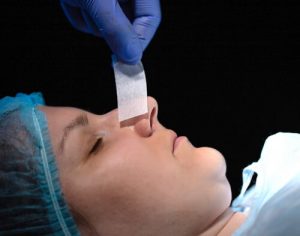Are you considering enhancing the appearance of your nose? If so, understanding the cost of nose surgery is crucial in planning your transformation. In this article, we delve into nose surgery prices, exploring the factors influencing them and providing you with essential insights to make an informed decision. Prepare to embark on a journey with an experienced cosmetic doctor, where aesthetics, price, and professional guidance intertwine harmoniously to help you achieve your desired nasal aesthetics.
Understanding the Basics of Nose Surgery Costs
Understanding the costs of nose surgery, commonly called rhinoplasty, is crucial for anyone considering this surgical procedure. The price of rhinoplasty can vary significantly based on various factors, making it essential to comprehend what contributes to the overall cost. Key factors of rhinoplasty costs:
- Surgeon’s Fee: This is typically the most significant portion of the cost. Fees vary depending on the doctor’s qualifications, experience, and reputation. Experienced cosmetic doctors may charge higher fees due to their expertise.
- Hospital Fees: The cost of the hospital stay, operating theatre, and any necessary medical tests contribute to the total cost. This varies depending on the duration of the and any overnight stay required.
- Anesthesia Costs: General anaesthesia is usually required for rhinoplasty. The anaesthetist’s fees are an additional cost, varying based on the complexity and length of the procedure.
- Type of Procedure: The rhinoplasty cost depends on whether it’s a primary or revision . Revisional procedures can be more complex and, therefore, more costly.
- Additional Procedures: Sometimes, additional procedures such as correcting breathing problems or modifying the nasal tip are undertaken, increasing the overall cost.
- Insurance Coverage: Costs may be partially covered by private health insurance if the is considered medically necessary, such as for breathing difficulties. Cosmetic rhinoplasty, undertaken purely for aesthetic reasons, is generally not covered.
- Post-Operative Care: Costs for post-operative care, including follow-up visits and any required medications, should also be considered.
- Geographical Location: The location of the clinic and the prevailing market rates in the region can significantly impact rhinoplasty costs.
Cost Comparison of Rhinoplasty vs. Non-Surgical Nose Reshaping Alternatives
Individuals often weigh the options between traditional rhinoplasty and non-surgical nose reshaping alternatives in nasal aesthetic enhancements. Understanding the cost implications of both methods is crucial for making an informed decision tailored to individual needs and financial situations. Analyzing the financial aspects of both procedures:
- Upfront Costs of Rhinoplasty: a surgical procedure generally involves significant upfront costs. These include doctor’s fees, hospital charges, anesthesia costs, and potential post-operative care. It’s a comprehensive solution often preferred for permanent and substantial modifications.
- Non-Surgical Alternatives: Non-surgical methods like dermal fillers are less expensive initially. These procedures involve injecting fillers to temporarily alter the nose’s shape and can be a cost-effective solution for minor adjustments.
- Longevity and Repeat Procedures: While cheaper per session, non-surgical alternatives require regular maintenance, usually every 6 to 18 months, which can add up over time. In contrast, rhinoplasty offers a long-term solution, potentially making it more economical over several years.
- Recovery Time and Associated Costs: Rhinoplasty requires a significant recovery period, potentially leading to time off work and additional care costs. Non-surgical procedures have minimal downtime, reducing the indirect costs associated with recovery.
- Insurance Considerations: Rhinoplasty may be partially covered by insurance if performed for medical reasons, unlike non-surgical alternatives typically classified as cosmetic procedures and not eligible for coverage.
- Risk and Complication Costs: Surgical rhinoplasty carries risks of complications that might lead to additional costs, including revision . Non-surgical methods have a lower risk but may require more frequent adjustments.
- Aesthetic Outcomes vs. Expense: The choice between the two methods also depends on the desired aesthetic outcome versus the expense. Surgical rhinoplasty can offer more dramatic and customisable changes, while non-surgical options are limited to minor enhancements.
Comparing Rhinoplasty Costs: Regional Variations
Rhinoplasty, the nose’s appearance, while a globally practised cosmetic and reconstructive procedure, exhibits notable cost variations across different regions. Several factors, including geographical location, local economic conditions, and the availability of specialist doctors, influence these regional differences in the cost of a nose job. Understanding regional variations in rhinoplasty pricing:
- Geographical Location: Metropolitan areas and major cities often have higher rhinoplasty costs than smaller towns or rural areas. This variation is partly due to higher operational costs and the demand for cosmetic medical procedures in urban centres.
- Availability of Specialist Surgeons: Regions with more experienced and renowned cosmetic doctors typically charge more for rhinoplasty. The competition in these areas can also influence pricing structures.
- Local Economic Factors: The general cost of living and economic conditions in a region can affect the overall pricing of cosmetic procedures. Higher living costs often translate to more expensive surgeries.
- Medical Tourism: Some regions have become popular destinations for medical tourism due to lower costs. However, potential patients should consider the quality of care and post-operative support in these cases.
- Insurance and Healthcare Systems: The extent to which rhinoplasty is covered by insurance or public healthcare systems varies by region, influencing out-of-pocket patient costs. In Australia, private health insurance and Medicare may cover part of the cost if the is medically necessary.
- Facility Standards and Accreditation: The standards of surgical facilities and their accreditation status can also impact costs. High-end, accredited facilities may charge more due to their superior care and technology.
Insurance Coverage and Financing Options for Rhinoplasty
 Navigating the financial aspects of rhinoplasty, particularly insurance coverage, hospital costs, and financing options, is crucial for patients considering this . Understanding what costs can be covered and the available payment plans can significantly influence the decision-making process. Exploring insurance and financing for rhinoplasty:
Navigating the financial aspects of rhinoplasty, particularly insurance coverage, hospital costs, and financing options, is crucial for patients considering this . Understanding what costs can be covered and the available payment plans can significantly influence the decision-making process. Exploring insurance and financing for rhinoplasty:
- Insurance Coverage: In Australia, private health insurance may cover some rhinoplasty costs if the procedure is deemed medically necessary, such as for breathing difficulties or reconstructive purposes after trauma. However, cosmetic rhinoplasty, performed solely for aesthetic enhancement, is generally not covered.
- Medicare Rebates: A Medicare rebate may be available for procedures that qualify as medically necessary. This can reduce the out-of-pocket expense for eligible patients, but it’s essential to understand the specific criteria for coverage.
- Financing Options: Many cosmetic clinics offer financing plans to help patients manage the cost of the . These plans can include payment schemes that allow for paying off the procedure over time.
- Credit Facilities: Some patients opt for medical loans or credit facilities to finance their . Considering interest rates and repayment terms is important when exploring this option.
- Savings Plans: Setting up a dedicated savings plan for the is prudent for those considering elective cosmetic rhinoplasty. This method avoids the pitfalls of loans and interest payments.
- Cost Comparison and Budgeting: Researching and comparing costs across different clinics and regions can help budget and plan the . Patients should factor in all related expenses, including post-operative care.
- Consultation Fees: Initial consultation fees are sometimes separate from the cost and may not be covered by insurance. This should be factored into the overall budget.
- Understanding the Full Cost: Patients should request a detailed breakdown of all costs involved in the , including any potential additional expenses, to fully understand the financial commitment.
The Cost-Benefit Analysis of Nose Surgery
Engaging in a cost-benefit analysis is essential for anyone considering nose , commonly known as a rhinoplasty procedure. This process involves weighing the financial investment against the potential physical and psychological benefits that the can offer. Evaluating the costs and benefits of rhinoplasty:
- Financial Investment: The rhinoplasty cost in Australia encompasses the doctor’s fees, facility costs, anaesthesia, and any related medical tests or post-operative care. Considering the total financial commitment, including potential costs for any revision or unexpected expenses, is crucial.
- Physical Benefits: Rhinoplasty can offer significant physical benefits, particularly for individuals with structural issues that affect breathing. The can correct deviated septums, reshape nasal passages, and address other functional concerns.
- Aesthetic Improvement: For many, rhinoplasty’s primary benefit is enhancing facial symmetry and aesthetics. A well-performed nose job can harmonise facial features, potentially increasing self-confidence and satisfaction with one’s appearance.
- Psychological Impact: The psychological benefits, such as improved self-esteem and body image, are significant factors to consider. The impact of feeling more comfortable and confident in one’s appearance can be profound.
- Quality of Life Enhancements: Beyond aesthetics, rhinoplasty can improve quality of life, especially if breathing difficulties are resolved. Better sleep, increased exercise tolerance, and comfort in daily activities can be substantial benefits.
- Risks and Complications: Weighing potential risks and complications is critical to the analysis. Every surgical procedure carries risks, essential for making an informed decision.
- Long-term Outcomes: Consideration of the long-term outcomes, including the durability of the results and any future medical implications, is crucial.
- Alternative Options: Exploring non-surgical alternatives and comparing their costs and outcomes to surgical options is also beneficial.
Long-Term Financial Considerations in Rhinoplasty
 When considering rhinoplasty, it’s crucial to focus on the immediate costs and understand the long-term financial implications of surgical procedures. While offering significant benefits, this surgical procedure can have ongoing financial impacts that should be carefully weighed. Exploring long-term financial aspects of rhinoplasty:
When considering rhinoplasty, it’s crucial to focus on the immediate costs and understand the long-term financial implications of surgical procedures. While offering significant benefits, this surgical procedure can have ongoing financial impacts that should be carefully weighed. Exploring long-term financial aspects of rhinoplasty:
- Durability of Results: Rhinoplasty results are generally long-lasting, but it’s important to consider that future changes in facial structure or unforeseen complications might necessitate additional procedures, impacting long-term costs.
- Potential for Revision Surgery: Some patients may require revision to address issues from the initial procedure or to refine the results, which can add significant costs to the overall financial commitment.
- Maintenance and Care: Post-operative care, including follow-up appointments, medications, and potential treatments for any complications, can contribute to the long-term financial burden.
- Insurance Coverage Limits: Patients should consider the extent of their private health insurance coverage and understand that most insurers do not cover cosmetic procedures. This means bearing the full cost of potential future surgeries if they are not medically necessary.
- Employment and Recovery Time: The recovery period following rhinoplasty might require time off work, especially in occupations involving physical labour or public interaction. This can lead to a loss of income during the recuperation phase.
- Non-Monetary Costs: Beyond the financial aspects, patients should also consider non-monetary costs like the time invested in recovery and the emotional impact of undergoing and recovering from .
- Quality of Surgeon and Facility: Opting for a highly skilled doctor and accredited facility might have a higher upfront cost but can reduce the likelihood of expensive revision surgeries and complications.
- Future Medical Needs: Consideration should be given to the potential impact of the on future medical needs, such as the need for specific imaging or additional consultations for related health issues.
Navigating Consultation Fees and Post-Operative Care Costs
A comprehensive understanding of the financial aspects of rhinoplasty extends beyond hospital costs and the itself to include consultation fees and post-operative care costs. These expenses are crucial components of the overall financial planning for the procedure. Managing the additional financial aspects of rhinoplasty:
- Consultation Fees: Initial consultation fees vary among doctors and clinics. Some may deduct this fee from the total cost if you proceed with the procedure, while others consider it a separate expense.
- Detailed Cost Breakdown: During the consultation, request a detailed breakdown of all costs associated with the rhinoplasty, including the , anaesthesia, facility fees, and any additional charges.
- Post-Operative Care Costs: After , there will be costs associated with recovery, including medications, special dressings, and follow-up visits. These should be accounted for in the total expense.
- Potential for Unexpected Expenses: Be prepared for unexpected costs, such as extended hospital stays, additional medications, or treatment for complications.
- Insurance Coverage: Check with your private health insurer about coverage for post-operative care, especially if the rhinoplasty is done for medical reasons. Cosmetic procedures are typically not covered.
- Revision Surgery Costs: In some cases, revision may be necessary, incurring additional costs. Discuss the likelihood and potential costs of revision during the consultation.
- Budgeting for Recovery: Factor in potential loss of income if you require time off work for recovery and any support services you might need, such as transportation or home care during the initial recovery period.
- Long-Term Care: Consider any long-term care expenses, such as ongoing medications or treatments, to maintain the results.
In conclusion, when considering nose , it is important to consider the associated costs. The price of this procedure varies depending on various factors, such as the cosmetic doctor’s experience, location, and complexity of the . While choosing a qualified and reputable cosmetic doctor is crucial, it is also essential to inquire about the pricing structure beforehand. By understanding your area’s average nose prices, you can make informed decisions and budget accordingly. Remember to prioritise safety and effectiveness over cost regarding your health and desired outcomes.
If you’re contemplating the transformative journey of rhinoplasty and find yourself navigating through the complexities of costs, options, and what they entail for you personally, know that you’re not alone. At Rhinoplasty Sydney Cost, we’re dedicated to providing you with clarity, support, and expert guidance every step of the way. Don’t let the array of numbers and options cloud your vision for a refined nasal profile. Reach out to us at (02) 8880 5116 for a comprehensive consultation where we can discuss your desires, address your concerns, and outline a clear, personalised path forward. Your journey to confidence and satisfaction is just a phone call away.
References
Rhinoplasty Cost | American Society of Plastic Surgeons
https://www.cosmetic.org/cosmetic-procedures/rhinoplasty/cost
Nose reshaping (rhinoplasty) – NHS
https://www.nhs.uk/conditions/cosmetic-procedures/cosmetic-/nose-reshaping-rhinoplasty/
Rhinoplasty – Mayo Clinic
https://www.mayoclinic.org/tests-procedures/rhinoplasty/about/pac-20384532
Cost-effectiveness of Corticosteroid Nasal Spray vs Surgical Therapy in Patients With Severe to Extreme Anatomical Nasal Obstruction
https://pubmed.ncbi.nlm.nih.gov/26747790/
Rhinoplasty (nose job, nose ) | healthdirect
https://www.healthdirect.gov.au/rhinoplasty

